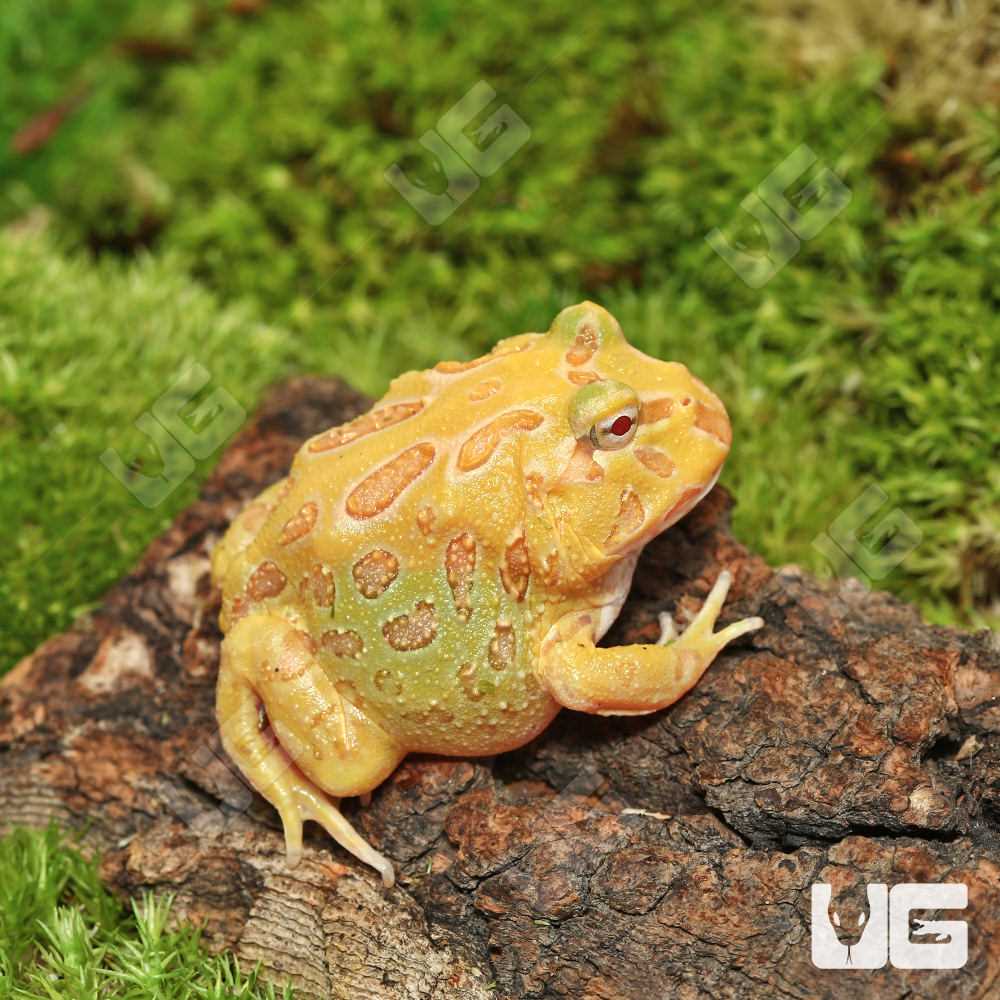
The Yellow Pacman Frog is native to the rainforests of South America. It can be found in countries such as Brazil, Argentina, and Paraguay. This amazing animal prefers moist and warm environments, which is why it thrives in tropical areas. It is an amphibian, which means it spends part of its life in water and part on land. These frogs have a unique reproduction process, laying eggs that eventually hatch into tadpoles. The tadpoles then undergo metamorphosis, transforming into adult frogs.
Description and Characteristics
The yellow Pacman frog has a distinctive yellow coloration, which allows it to blend in with its surroundings and provides effective camouflage in the wild. This coloring helps the frog to ambush its prey, which primarily consists of insects, small rodents, and even other frogs.
Despite its bright yellow appearance, the yellow Pacman frog is not a venomous animal. While some frog species have toxic skin secretions for self-defense, the yellow Pacman frog relies on its size and aggressive nature to deter predators.
In addition to its unique physical characteristics, the yellow Pacman frog is known for its distinctive call. The males produce a short, raspy croak that serves as a mating call during the breeding season.
Choosing the Right Enclosure
First and foremost, the enclosure should be large enough to accommodate the frog comfortably. A bigger enclosure allows for sufficient movement and exploration, which is essential for the frog’s mental and physical well-being. Providing an enclosure with dimensions of at least 20 gallons is recommended.
Additionally, it is crucial to ensure that the enclosure has a secure lid or cover to prevent escape. Pacman frogs are excellent jumpers and climbers, and their curiosity can lead them to attempt to explore their surroundings. A secure lid will help keep them safe and contained.
The next important consideration when choosing an enclosure is the substrate. It is best to provide a substrate that allows the frog to blend in with its environment and provides an opportunity for camouflage. A substrate made of coconut fiber or moss can replicate the natural forest floor and provide a comfortable and suitable environment for the frog.
Furthermore, it is recommended to include hiding spots within the enclosure. Pacman frogs are ambush predators and spend a significant amount of time buried and waiting for potential prey to pass by. Adding plants, logs, or caves can mimic their natural habitat and provide hiding places for them.
Lastly, it is essential to set up a proper lighting and heating system within the enclosure. Pacman frogs require a temperature range of 75°F to 85°F (24°C to 29°C) during the day, with a slight decrease at night. The humidity levels should be maintained between 50% and 80%. Installing a thermometer and hygrometer in the enclosure will help monitor these conditions accurately.
Temperature and Humidity Requirements
Temperature
The ideal temperature for your Yellow Pacman Frog should be around 75 to 85 degrees Fahrenheit (24 to 29 degrees Celsius) during the day and slightly cooler at night. You can use a heat mat or an under-tank heater to provide the necessary warmth. It is crucial to monitor the temperature regularly using a reliable thermometer to ensure it stays within the appropriate range.
Humidity
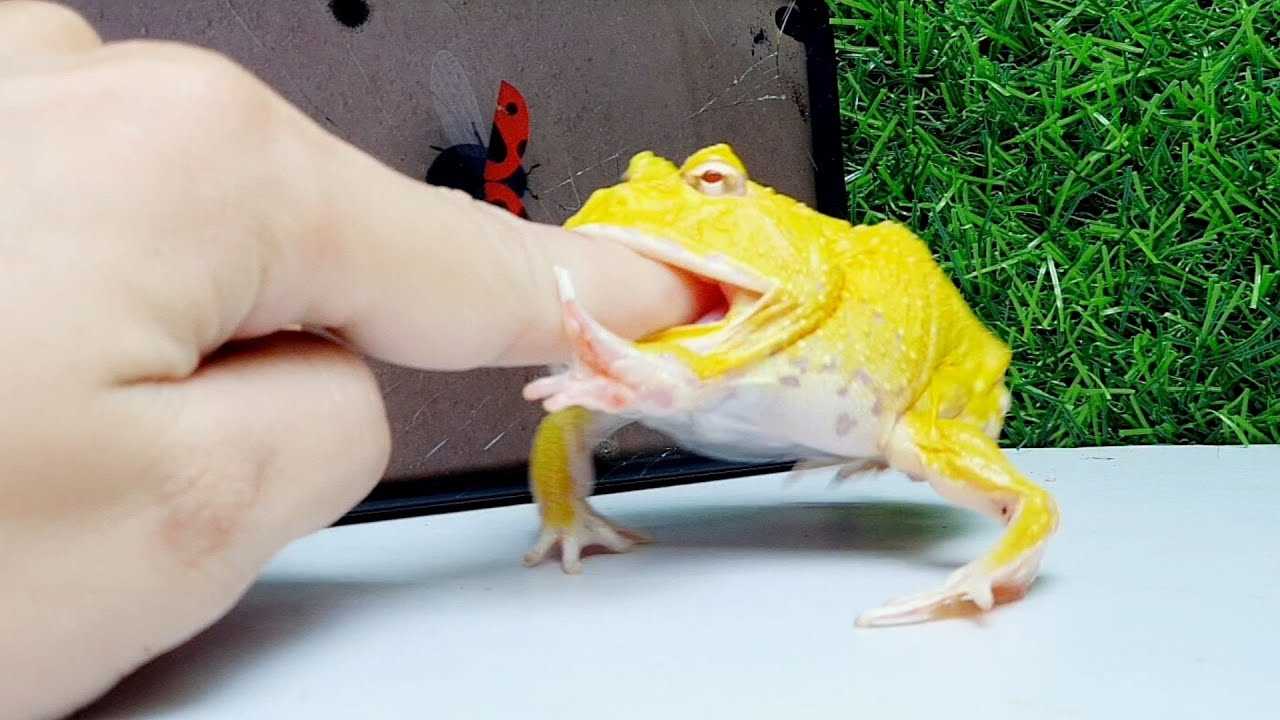
As a rainforest-dwelling frog, the Yellow Pacman Frog requires a humid environment to thrive. The humidity level in the enclosure should be maintained between 60% to 80%. You can achieve this by providing a shallow water dish and misting the enclosure with water regularly. Using a hygrometer will help you monitor the humidity levels accurately.
All About the Yellow Pacman Frog: Diet and Feeding Schedule
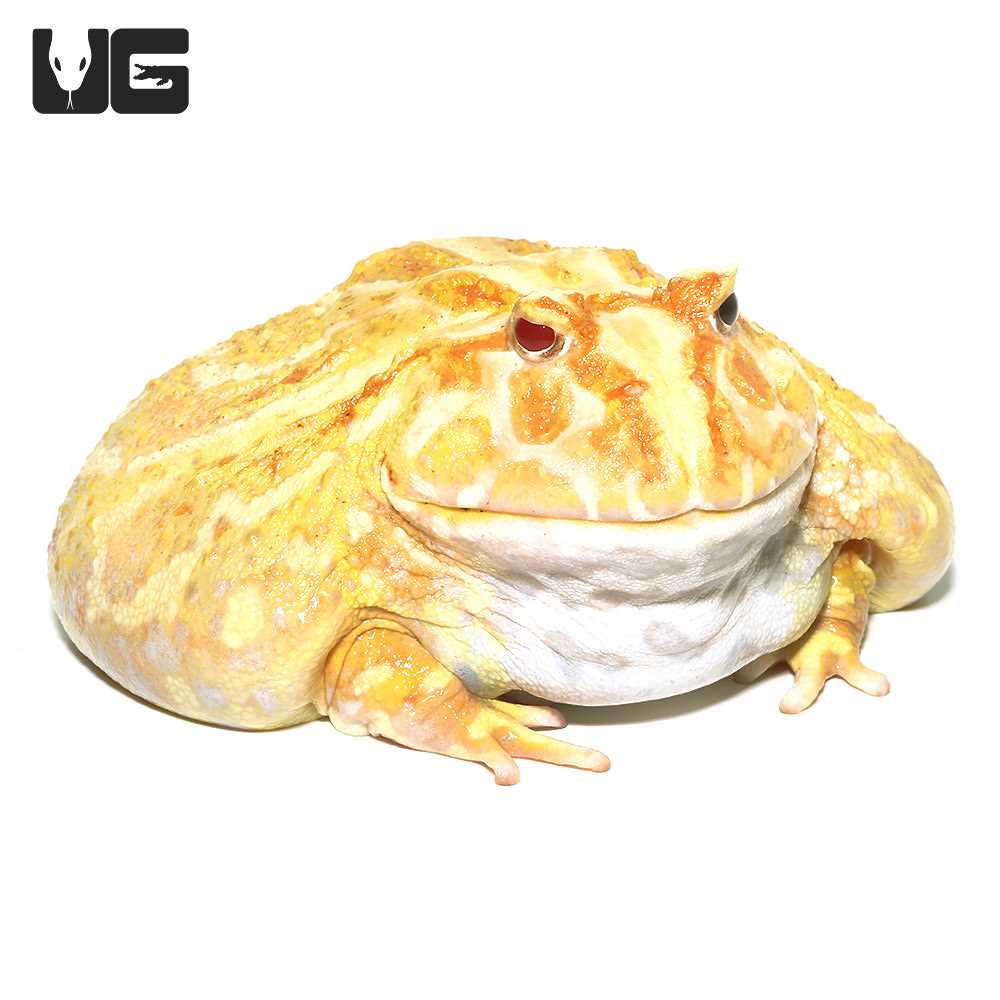
Feeding Schedule
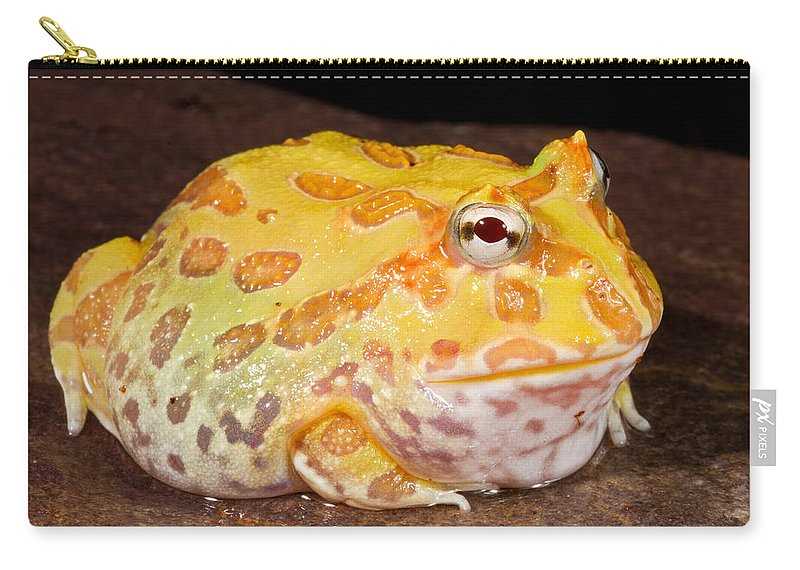
Diet
An ideal diet for the yellow pacman frog consists of a variety of live prey items, such as crickets, mealworms, waxworms, and even small feeder fish. These prey items should be properly gut-loaded and dusted with calcium and vitamin supplements to ensure the frog receives the necessary nutrients.
It is also important to ensure that the prey items are the appropriate size for the frog. Avoid feeding them prey items that are too large, as this can lead to choking or other digestive issues. It’s best to offer prey items that are no larger than the width of their mouth.
Frog Handling and Socialization
When handling your frog, always make sure to moisten your hands to prevent your frog’s delicate skin from drying out. This will also help prevent any oils or residue on your hands from harming your frog. Gently scoop up your frog from underneath, supporting its body with both hands. Never grab or squeeze your frog, as this can cause stress and injury.
| Handling Tips | Socialization Tips |
|---|---|
|
|
Remember, frogs are delicate creatures and should always be handled with care. By following these tips and providing a comfortable environment, you can ensure the well-being of your yellow Pacman frog.
Common Health Issues
The yellow Pacman frog is also prone to respiratory infections. These can occur due to inappropriate humidity levels or inadequate ventilation in the enclosure. Symptoms of a respiratory infection may include difficulty breathing, wheezing sounds, or excessive mucus production. If you observe any of these signs, consult a veterinarian for diagnosis and treatment.
Preventing Health Issues
Maintaining a clean and hygienic enclosure is vital for preventing common health issues in yellow Pacman frogs. Regularly clean the substrate and remove any uneaten food to prevent the buildup of bacteria or parasites. Additionally, provide a water dish for the frog to soak in and maintain proper humidity levels.
Regular veterinarian check-ups are crucial for monitoring the frog’s overall health and detecting any potential issues early on. A veterinarian specializing in exotic animals can provide advice on proper diet, temperature, and humidity requirements specific to Pacman frogs.
Breeding and Reproduction
Mating Behavior and Reproductive Cycle
Egg Laying and Care
Females typically lay clutches of eggs in bodies of water such as ponds or shallow pools. They can lay anywhere from 100 to 1000 eggs at a time, depending on their size and age. The eggs are small and round, with a gel-like coating that protects them from drying out.
Tadpole Development and Metamorphosis
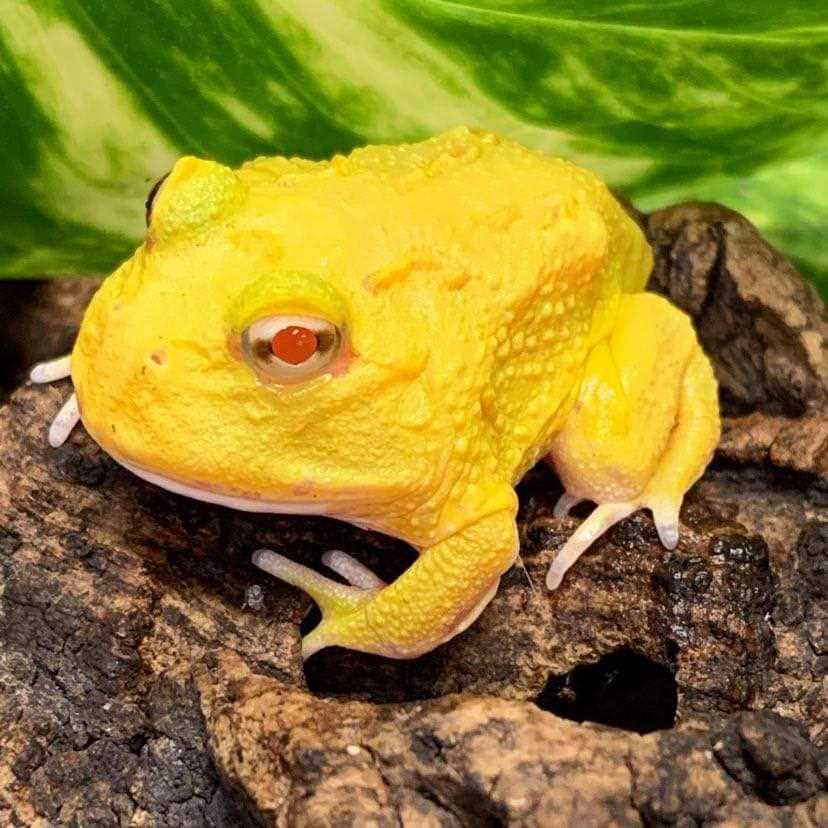
The tadpoles of the yellow Pacman frog are carnivorous and will feed on small invertebrates and organic matter in the water. They will undergo a series of metamorphoses, gradually developing legs and lungs until they resemble miniature versions of their adult form.
Once the tadpoles have completed their metamorphosis, they will leave the water and transition to a terrestrial lifestyle. At this point, they will require a suitable enclosure with appropriate temperature and humidity levels to thrive.
Breeding and reproducing the yellow Pacman frog can be a wonderful experience for amphibian enthusiasts. By providing the right conditions and care, you can observe the fascinating life cycle of these remarkable creatures.

I’m Lena Adams—a product of an unconventional upbringing in the African wilderness. My father, a daring explorer of African wildlife, sparked my fascination with reptiles, a passion that intertwined with the tragic loss of my mother during an expedition, leaving an indelible mark on my life. Driven to understand the creatures that captivated my parents, I embarked on my journey, sharing insights about reptiles, frogs, and lizards on my website. Through my explorations and conservation efforts, I honour my family’s legacy while seeking connections—to the creatures, nature, and the mother whose presence I yearn to understand.
